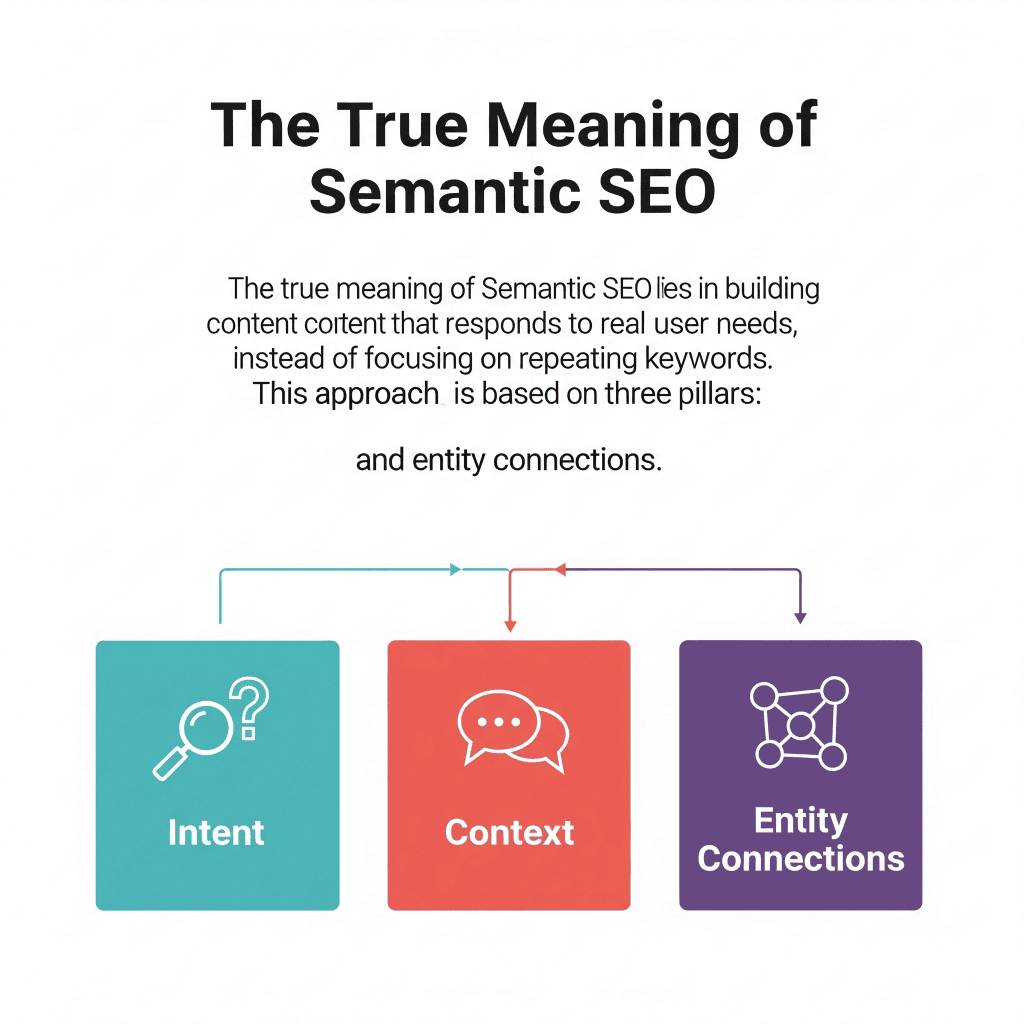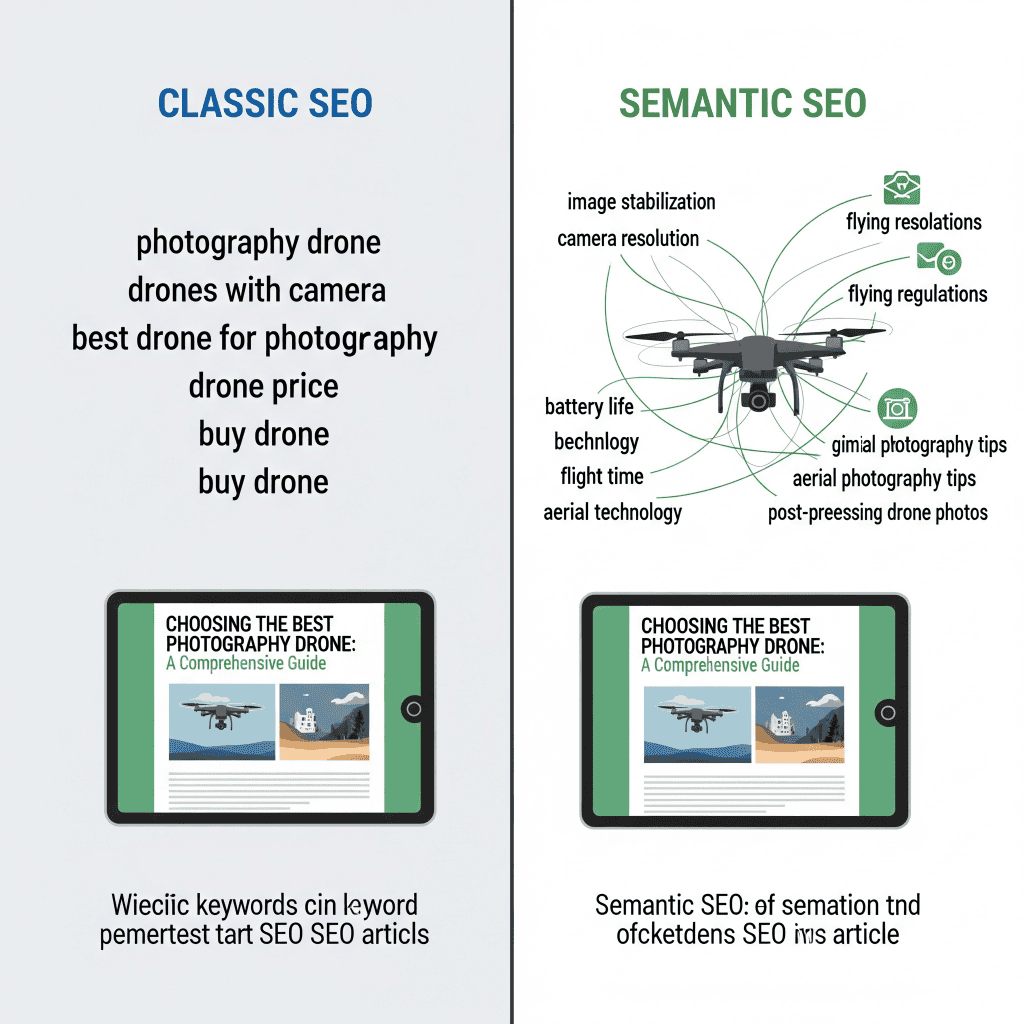Why Synonyms Aren’t Enough for Real Results”(And What Actually Works).
In the world of SEO, a certain myth still circulates that – although it seems harmless – seriously damages content quality and visibility strategies. It’s about the belief that Semantic SEO comes down to a simple trick: adding a few synonyms to the text. This sounds attractive because it promises quick results without much effort, but in reality it has nothing to do with how modern search engines analyze and evaluate website content. Google isn’t interested in whether you write “car” instead of “automobile.” For algorithms, something much deeper matters – user intent, thematic context, and connections between concepts.
That’s why wordplay alone isn’t enough. Semantic SEO is the process of building a web of meanings and connections that help search engines understand the full context of your content. This means including subtopics, related questions, and industry terms that naturally expand the context is crucial. This allows Google to recognize that your text isn’t just “using different words” but actually addresses a broader range of user needs and questions. In practice, this means creating content that builds topical authority and gives readers a complete picture of the topic—not just a simple list of synonyms.
The Synonym Myth in SEO.
Many marketers still live with the conviction that playing word substitution can improve their results. Text about “sports shoes” gets enriched with “sneakers,” “trainers,” and “athletic footwear,” hoping that Google will read this as greater semantic diversity. In practice, however, such an approach leads to artificial, unnatural language that not only brings no benefits but can actually lower the quality of user experience.
Today’s search engines don’t build rankings based on synonym lists. Thanks to advanced NLP (Natural Language Processing) algorithms, they can recognize the meaning of words and relationships between them, which means that adding substitutes contributes nothing. If someone searches for “best shoes for forest running,” Google can deliver results even when that exact phrase doesn’t appear in the content, but instead uses formulations related to treads, stabilization, or mud resistance.
What Semantic SEO Really Is.

The true meaning of Semantic SEO lies in building content that responds to real user needs, instead of focusing on repeating keywords. This approach is based on three pillars: intent, context, and entity connections.
-
Intent – Recognizing what the user is actually looking for, such as learning something, comparing products, or making a purchase.
-
Context – Distinguishing situations where the same word has completely different meanings, e.g., “Java” can refer to an island in Indonesia or a programming language.
-
Entities and their connections – Understanding the relationships between things: “Everest” is not just a word, but the world’s highest mountain, part of the Himalayas, located on the border of Nepal and Tibet, and a popular trekking destination.
Semantic SEO is therefore building entire networks of meaning in content. These are what make a page gain thematic authority and become not only visible but also valuable to the reader. For a deeper understanding of how entity-based content optimization can streamline your workflow, check out our article “Better SEO with Entities: How NEURONwriter Makes Content Creation Easier.”
How Semantic Search Works.
Understanding how semantic search works allows us to appreciate why synonyms aren’t any solution here. Previously, search engines worked mechanically, matching keywords in queries to words in text. Today this process looks different.
User queries and page content are transformed into vectors – representations in semantic space. Algorithms analyze semantic similarity, not literal phrase matching. Language models like BERT or MUM allow Google to understand context and answer questions even when the literal phrase entered by the user appears nowhere. Thanks to this, someone searching for “best coffee for morning energy” can receive content about arabica beans, brewing methods, and caffeine content, even though that exact formulation never appeared.
Example: Semantic SEO in Practice.

As a result, the text becomes richer, more complete, and actually responds to user needs. Google reads it as a valuable source of knowledge, and users appreciate that they find not only keywords but comprehensive context. This very difference makes Semantic SEO build thematic authority instead of creating empty repetition.
Mistakes That Sabotage Semantic SEO.
The biggest threat is still belief in old techniques. Cramming synonyms not only doesn’t improve visibility but leads to creating content that’s hard to read. Superficial descriptions, lack of deeper insight into the topic, or omitting important aspects cause users to quickly leave the page.
Another common mistake is neglecting internal linking, which allows creating logical knowledge structures. Lack of hierarchy and connections between content results in chaos, and algorithms can’t build a coherent thematic picture of the website. Worst, however, is ignoring user intent and focusing exclusively on phrases. Such an approach cuts SEO off from its basic function – responding to real recipient needs.
The Future of Semantic SEO.
What we see today is just the beginning. SEO is evolving faster than ever, and the direction is set by artificial intelligence and personalization technologies. AI-based content generators play an increasingly large role, which can support marketers but require meticulous fact-checking to avoid repeating errors or misinformation.
Google is already testing Search Generative Experience (SGE), where users receive answers in the form of dynamic summaries created by AI. This changes how content is consumed and forces creators to think not only about visibility in results but about how to become part of such a “collective answer.” Parallel to this, multimodal search is developing – using images, video, or voice – which opens completely new perspectives for optimization.
The future also belongs to real-time personalization, where search results are dynamically adapted to user location, preferences, and activity history. This makes Semantic SEO increasingly complex because it must consider not only general intents but also individual recipient context.
Conclusion.
Adding synonyms never was Semantic SEO and never will be. It’s a superficial trick that has no meaning in the era of algorithms analyzing intents and semantic connections. True optimization consists of building content that reflects real user needs, creates logical connections between entities, and shows thematic authority.
We’re entering a time when SEO becomes more a science of meanings than a game of words. Therefore, if you want to win, focus on intents, building context, and utilizing new technologies. These are exactly what make your content not only visible but also truly useful – today and in the future.
